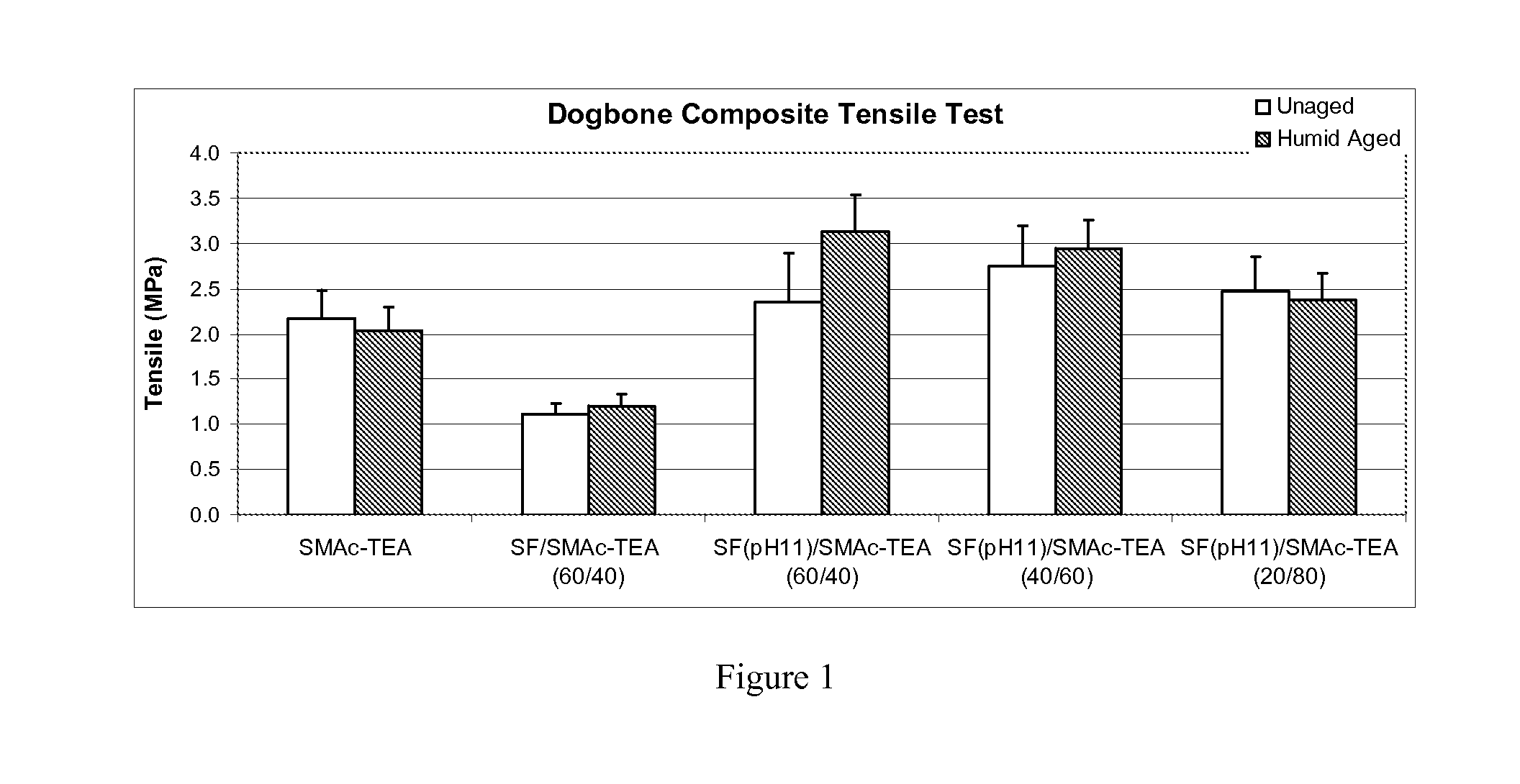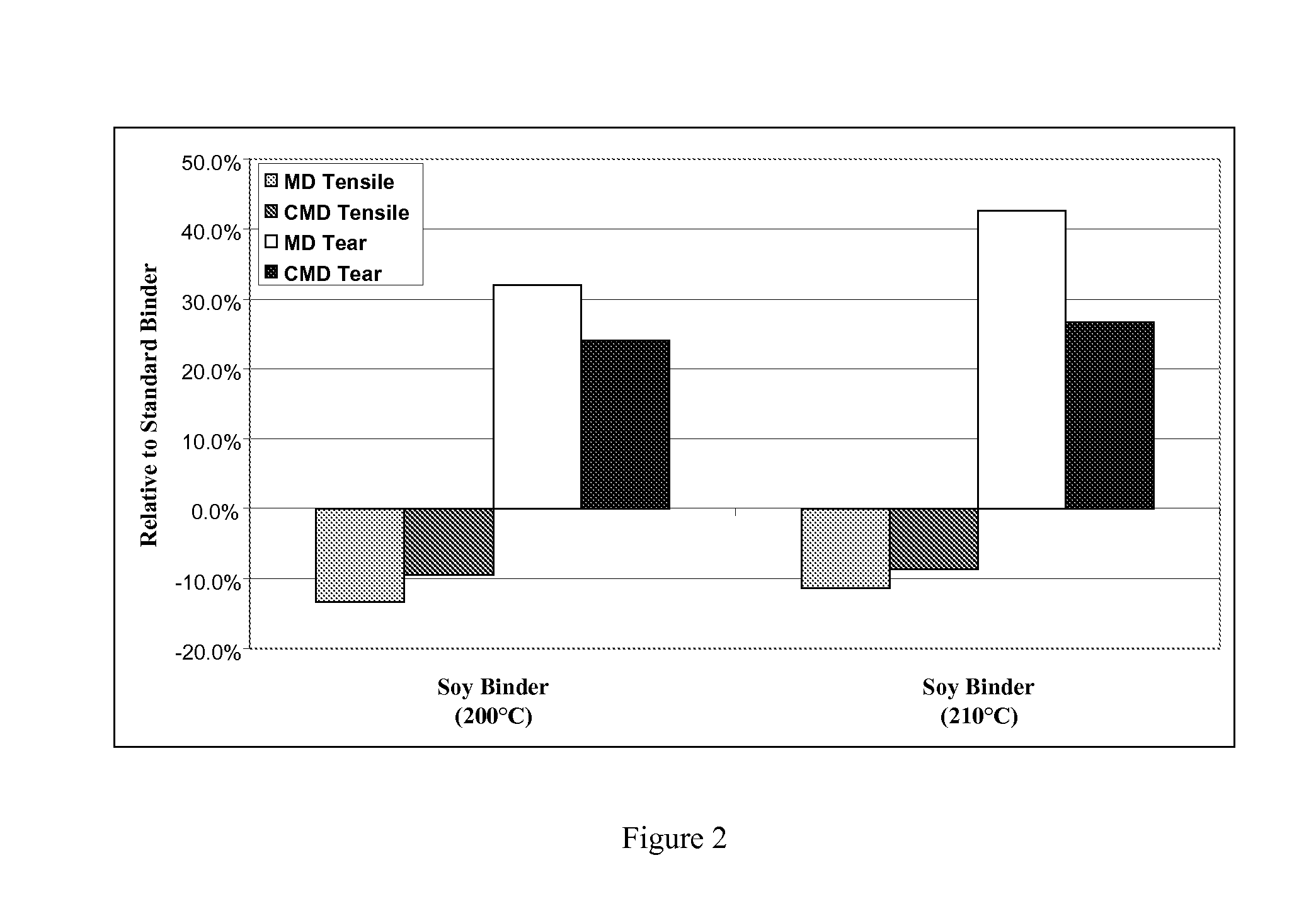Formaldehyde-free protein-containing binders for spunbond products
a technology of protein-containing binders and spunbond products, which is applied in the direction of protein adhesives, adhesive types, weaving, etc., can solve the problems of poor gluing strength and water resistance of many types of protein-containing adhesives, and its use is increasingly restricted, so as to reduce or even eliminate the need for petroleum-based binder ingredients and increase the pot life and reusability of pre-cured binder solutions.
- Summary
- Abstract
- Description
- Claims
- Application Information
AI Technical Summary
Benefits of technology
Problems solved by technology
Method used
Image
Examples
example # 1
Example #1
Modification of Soy Flour
[0057]50 grams of defatted soy flour (Prolia 200 / 90, Cargill) is dispersed in 200 ml of DI water at room temperature. 0.5 grams of sodium bisulfite is then added to the soy flour dispersion. The viscosity of the soy flour dispersion drops shortly after the addition of the sodium bisulfite. The final soy flour dispersion has a solids concentration of 18.9% by oven method (drying at 125° C. for 2 hours).
example # 2
Example #2
Modification of Soy Flour
[0058]50 grams of defatted soy flour (Prolia 200 / 90, Cargill) is dispersed in 200 ml of DI water at room temperature. 0.5 grams of sodium bisulfite is then added to the soy flour dispersion. After the viscosity of the soy flour dispersion is decreased to a stable region, the pH of the dispersion is adjusted to 11 using an ammonium hydroxide solution (25-30%). The final soy flour dispersion has a solids concentration of 17.5% by oven method.
example # 3
Example #3
Preparation of Polyamic Acid Resin (SMAc-TEA)
[0059]To a flask equipped with a reflux condenser is added 1,735 grams of water and 234 grams of 28-30% by weight aqueous solution of ammonia. To this solution is added 960 grams of a copolymer of styrene and maleic anhydride (SMA) having a molecular weight of approximately 2,000 and an acid number of 480. The mixture is then heated to 90° C. and maintained at 90° C. under constant stirring until a clear solution of polyamic acid is obtained. To the obtained polyamic acid solution is added 306 grams of triethanolamine. The final polyamic acid resin, hereinafter referred to as SMAc-TEA, has a solids of 42.4% and a pH of 6.8.
PUM
| Property | Measurement | Unit |
|---|---|---|
| Fraction | aaaaa | aaaaa |
| Fraction | aaaaa | aaaaa |
| Fraction | aaaaa | aaaaa |
Abstract
Description
Claims
Application Information
 Login to View More
Login to View More - R&D
- Intellectual Property
- Life Sciences
- Materials
- Tech Scout
- Unparalleled Data Quality
- Higher Quality Content
- 60% Fewer Hallucinations
Browse by: Latest US Patents, China's latest patents, Technical Efficacy Thesaurus, Application Domain, Technology Topic, Popular Technical Reports.
© 2025 PatSnap. All rights reserved.Legal|Privacy policy|Modern Slavery Act Transparency Statement|Sitemap|About US| Contact US: help@patsnap.com


